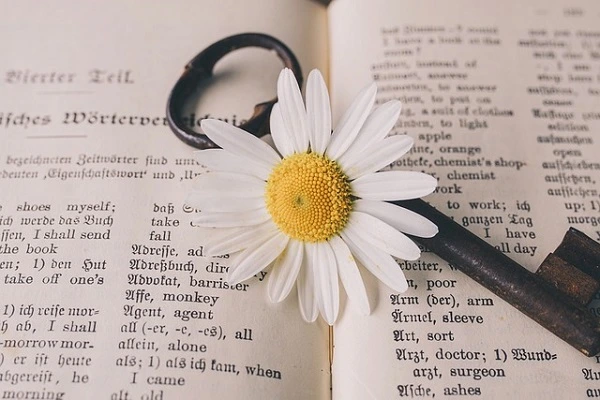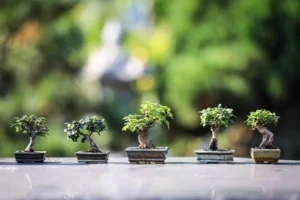Hey there! If you live in an apartment but dream of growing fresh greens, vertical hydroponics can be a game-changer. Yet all the jargon—pH, EC, NFTs—can feel like a foreign language. Don’t worry, this glossary will make sense of those buzzwords.
This article lives under the ‘Beginners’ category. We’re keeping things light and simple—no deep system builds or advanced tips here. Instead, you’ll find plain-English definitions for the most common terms a small-space vertical hydroponic newbie needs to know.
Feel free to bookmark this glossary and refer back whenever you encounter a confusing term—whether you’re picking a kit online or chatting in a forum. Think of it as your cheat sheet for decoding hydroponic speak so you can get growing without the headache.
Core Hydroponics Vocabulary
Before you dive deeper, here are the foundational words every hydroponic gardener should know. These terms apply to most systems, whether vertical or traditional, and mastering them will help you shop, set up, and troubleshoot with confidence.
Hydroponics
Hydroponics means growing plants in water instead of soil. Nutrients are dissolved into the water so roots absorb everything they need. This soilless method often leads to faster growth and higher yields, especially useful in tight apartment spaces.
Nutrient Solution
A nutrient solution is simply water mixed with essential elements like nitrogen, phosphorus, and potassium, plus trace minerals. Think of it as plant “food” in liquid form. Maintaining the right mix ensures your plants get balanced nutrition without the guesswork of soil amendments.
pH (Potential of Hydrogen)
The pH measures how acidic or alkaline your nutrient solution is, on a scale from 0 to 14. For most hydroponic crops, a pH between 5.5 and 6.5 is ideal. Keeping pH balanced ensures plants can absorb nutrients efficiently and avoid deficiencies.
Electrical Conductivity (EC) / Parts Per Million (PPM)
EC or PPM gauges the concentration of dissolved nutrients in your water. EC is measured in millisiemens per centimeter (mS/cm), while PPM counts parts per million of dissolved solids. If the nutrient solution is too weak or too strong, plants can suffer from slow growth or nutrient burn.
Reservoir
The reservoir is the container holding your nutrient solution. In a vertical setup, it’s usually tucked at the base of the tower. A well-maintained reservoir is key: keep it clean, monitor water levels, and replenish nutrients or top off with fresh water as needed.
Vertical Hydroponics-Specific Terms
Here are key terms unique to vertical hydroponic setups. These words help you understand how nutrients move, where roots grow, and which parts make your tower tick.
NFT (Nutrient Film Technique)
NFT is a system where a thin film of nutrient solution flows down a sloped channel. Roots hang into that film, soaking up nutrients as they pass by. Many vertical towers use NFT-style channels, allowing constant circulation and efficient nutrient uptake.
DWC (Deep Water Culture) Tower
In a DWC tower, stacked net pots sit above a shared reservoir. Roots dangle directly into the nutrient solution below. Because all plants share the same water, oxygenation is crucial—often achieved with an air stone. DWC towers are popular for fast growth in small spaces.
Grow Trays / Grow Cups
Grow trays or cups are individual pots that hold net pots and grow media (like clay pebbles). In vertical systems, these cups stack in tiers. Each cup supports one plant, and its roots extend into the tower’s interior. This modular design makes planting, harvesting, and cleaning easy.
Submersible Pump
A submersible pump sits inside the reservoir and pushes nutrient solution to the top of the tower. The flow rate matters: too weak and lower plants won’t get fed; too strong and water can splash or overflow. For small towers, choose a pump rated for your tower’s height.
Drip vs. Flood-and-Drain (Ebb-and-Flow)
“Drip” means tiny streams of nutrient solution drip onto each plant’s base. “Flood-and-drain” fills a level fully, then drains back into the reservoir. Many beginner towers use simple drip emitters—steady and low-maintenance. Advanced setups may cycle between flood and drain for thorough rinsing and oxygenation.
Small-Space Considerations
Living in an apartment means every inch counts. When building a vertical hydroponic system in a small space, understanding terms tied to space constraints is crucial. From footprint to portability, these words help you choose the right setup without sacrificing living area or convenience.
Footprint
Footprint refers to the amount of floor or countertop area your vertical system occupies. In a tiny balcony or kitchen corner, measuring footprint (often in square inches or centimeters) ensures you pick a tower that fits. Always check dimensions before buying to avoid cramped spaces.
Modular / Stackable
Modular or stackable systems use pieces that clip or screw together vertically. If you start with a basic column, you can add tiers later as your plant needs grow. This modular design saves floor space and allows customization. Just ensure each tier connects securely for stability.
Compact Design / Slim Profile
Compact design or slim profile describes systems engineered to be narrow. Many towers are only 10–12 inches wide, making them ideal for corners or narrow hallways. A slim profile maximizes vertical growing without eating into living space. Always compare widths and heights to fit your apartment layout.
Plug-and-Play vs. DIY Kit
Plug-and-play refers to pre-assembled systems that arrive ready to fill, plug in, and plant. DIY kits, on the other hand, require you to assemble tiers, install pumps, and wire tubing. Beginners often start with plug-and-play for convenience, while DIY kits suit those who enjoy building and customizing components.
Portability / Mobility
Portability or mobility describes systems designed to be lightweight or fitted with casters. If you rent, you can move the tower to chase sunlight or store it away during a move. Look for plastic or PVC components to keep weight down. Casters add flexibility to suit your space.
Nutrient & Growing Terms
In this section, we’ll cover terms related to feeding and root health. Knowing these helps you choose the right media and avoid nutrient issues. Each word below shows up often when setting up or maintaining a small-space vertical hydroponic system.
Grow Media
Grow media refers to the material that supports a plant’s roots—common options include rockwool, coconut coir, and clay pebbles. Unlike soil, media simply holds the plant upright while nutrients flow through. Rockwool cubes are popular for beginners because they’re easy to place into net pots and wick moisture.
Starter Plugs
Starter plugs, or seedling plugs, are pre-formed cubes of grow media—often peat or rockwool—used to germinate seeds. You plant a seed into the plug, wait for roots to form, then drop the entire plug into your vertical system’s net pot. This saves time and reduces transplant shock.
Nutrient Lockout
Nutrient lockout happens when pH or EC levels are off, preventing roots from absorbing certain nutrients. Imagine having plenty of food but being unable to digest it—plants show deficiencies even when nutrients are present. Regular monitoring of pH and EC avoids this issue, ensuring balanced uptake.
Reservoir Top-Off
A reservoir top-off means adding plain water to replace what’s been used or evaporated, keeping EC stable. Over time, water levels drop, and salts concentrate. Instead of emptying the reservoir, you “top off” with water. Every small-space gardener should check levels weekly, especially in warmer apartments.
Aeration / Oxygenation
Aeration, or oxygenation, means adding air to the nutrient solution—often with an air stone connected to a small pump. Roots sitting in stagnant water can suffocate and develop root rot. Proper aeration ensures dissolved oxygen reaches all roots, promoting healthy growth and preventing stunted development.
Growth Stage & Lifecycle Terms
In vertical hydroponics, understanding plant stages ensures you provide the right care at the right time. Below are key lifecycle terms a beginner should know, from when seeds sprout to when you harvest. Each stage has unique needs—getting familiar with these words makes your journey smoother.
Germination
Germination is when a seed sprouts into a seedling, usually within 2–7 days. You’ll notice a tiny white root (radicle) and two cotyledons (first leaves). At this point, keep humidity high and mist gently. Once the seedling shows true leaves, it’s ready for your vertical system.
Vegetative Stage (Veg Stage)
The vegetative stage, or “veg,” is when the plant focuses on leaf, stem, and root growth. Lighting typically runs 16–18 hours per day to encourage lush foliage. In small-space vertical systems, healthy veg growth means fuller towers. Check that your nutrient solution is balanced and maintain stable pH for robust leaves.
Flowering / Fruit Set
Flowering (or fruit set) is when a plant shifts from leafy growth to producing blooms or fruits. Many small-space growers stick to leafy greens, so you might not see flowering often. If you grow herbs or tomatoes, watch for bud sites and adjust lighting to 12 hours on, 12 hours off to trigger blooms.
Cloning / Cuttings
Cloning means taking a cutting from a “mother plant” to produce a genetically identical plant. After cutting, place it in a moist starter plug under a humidity dome. Roots can form in 1–2 weeks. Once rooted, transfer the clone into your tower’s net pot—no seed germination needed.
Harvest / Yield
Harvest refers to cutting or picking mature leaves, herbs, or fruits. Yield is the total produce over time. In a small vertical system, you might harvest lettuce every 4–6 weeks. Harvesting selectively (picking outer leaves) encourages continuous growth. Keep track of yield to fine-tune nutrient schedules and planting cycles.
Monitoring & Maintenance Terms
Keeping your vertical hydroponic system humming in a small apartment hinges on routine checks. These terms cover the gadgets and chores that keep nutrient solution fresh and roots healthy. Mastering them will help you prevent problems before they start and enjoy worry-free growth.
pH Meter / pH Test Kit
A pH meter or test kit measures how acidic or alkaline your nutrient solution is. Using a digital meter gives quick, accurate readings, while a simple test kit uses color-changing drops. Check pH weekly to stay in the ideal 5.5–6.5 range—outside that window, plants struggle to absorb nutrients.
EC Meter / TDS Meter
An EC (electrical conductivity) meter or TDS (total dissolved solids) meter gauges nutrient strength. EC reads in millisiemens, TDS usually shows parts per million. Aim for manufacturer-recommended levels for your crop (often 1.2–2.0 mS/cm for lettuce). Test each week to avoid nutrient burn or starvation in your tower.
Reservoir Change-Out vs. Top-Off
Changing out the reservoir means draining and refilling with fresh nutrient solution every 1–2 weeks. A top-off involves adding plain water to replace what’s evaporated or used. In small spaces, you might top off midweek and do a full change-out on weekends—keeping salts from building up in your tower.
Algae Control / Light Blockers
Algae thrives when light hits your reservoir surface. Use light blockers like black tape, a snug lid, or foam board to shield the water. Algae competes for nutrients and clogs pumps. For apartment setups, simple hacks—like painting the reservoir black—prevent unwanted green growth without complicated filters.
Air Stone / Airstone
An airstone, connected to a small air pump, bubbles oxygen into the nutrient solution. Proper aeration prevents roots from suffocating or developing root rot, especially in a cozy apartment where temperatures can rise. Choose a quiet air pump to avoid noise, and clean the airstone monthly to keep bubbles flowing.
Final Words
Knowing the right terms for vertical hydroponics turns confusion into confidence. With this glossary in hand, you’ll navigate equipment lists, ingredient labels, and setup guides without second-guessing.
Each definition connects to a practical step—whether mixing nutrients, choosing media, or adjusting pH. These words become tools in your hands, helping you care for plants like a seasoned grower.
Whenever a new phrase pops up—whether you’re unboxing a kit or chatting in an online forum—this glossary will anchor your understanding. Keep it close, and watch how these once-intimidating buzzwords transform into familiar signposts guiding your small-space hydroponic success.




